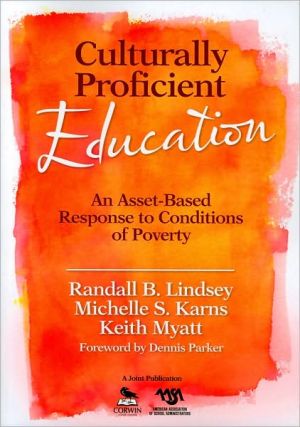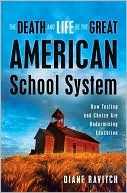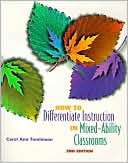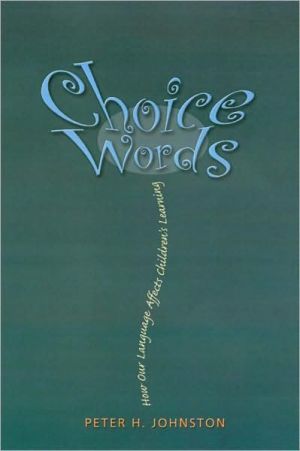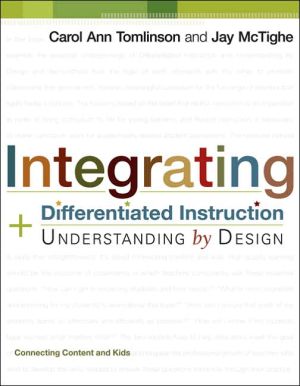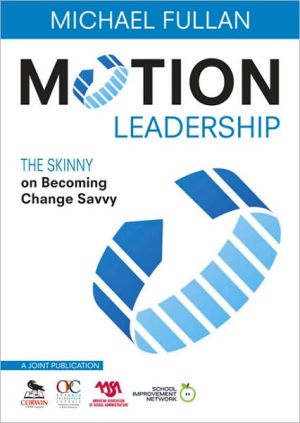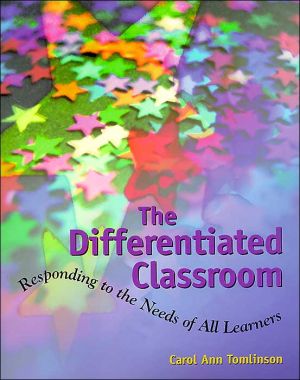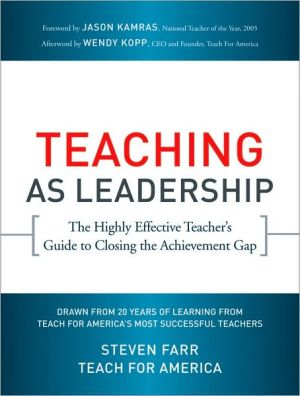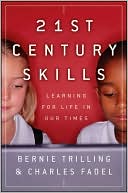Culturally Proficient Education: An Asset-Based Response to Conditions of Poverty
Using the framework of cultural proficiency, this timely resource offers educators the knowledge and skills to maximize educational opportunities for all students, independent of students’ socioeconomic status.
Search in google:
Using the framework of cultural proficiency, this timely resource offers educators the knowledge and skills to maximize educational opportunities for all students, independent of students’ socioeconomic status.
Foreword Dennis Parker viiiAcknowledgments xAbout the Authors xiiIntroduction 1Part I Why Poverty and Cultural Proficiency? 51 Asset-Based Approaches to Students From Low-Income or Impoverished Communities 9Getting Centered 9The Intent of This Chapter 11Poverty in Our Communities and Schools 12Asset or Deficit Perspectives? 15Recognizing Our Perspectives: Deficit- or Asset-Based? 17The Promise of Culturally Proficient Approaches 22Going Deeper 262 The Middle Class School in Communities of Poverty 28Getting Centered 28The Intent of This Chapter 30Faces in the History of Poverty 30Accountability: For Whom? 36Four Stories Repeated Throughout Canada and the United States 38Schools as Middle Class Entities: "Saving the Poor" 46Cultural Proficiency as an Asset-Based Approach 47Going Deeper 483 The Cultural Proficiency Tools Build on Assets 49Getting Centered 49Building on Other's Assets: Cultural Proficiency's Inside-Out Process 52Cultural Proficiency Represents a Paradigm Shift for Viewing Poverty 53Cultural Proficiency as a Lens 54The Cultural Proficiency Tools 55Cultural Proficiency and Resiliency: Educators and Students 62Going Deeper 65Part II Prosocial School Applications 674 Culturally Proficient Pedagogy 69Getting Centered 69Pine Hills High School's Socioeconomic Context 70Intent of This Chapter 71Beginning the Inside-Out Process 71We Create Conditions for Learning 74Culturally Competent Praxis 8410 Tenets for Asset-Based Learning 87Going Deeper 925 Culturally Proficient Leadership Support for Instruction 93Getting Centered 93Intent of This Chapter 96Leadership for Learning 96Reflective and Dialogic Questions 98Going Deeper 1146 Policy Development to Ensure and Support Teaching and Learning 115Getting Centered 115The Intent of This Chapter 119Culturally Proficient Policy Development in Two Steps 120Adaptive Leadership 122Going Deeper 128Part III A Call to Action 1297 A Call to Action: The Time Is Now 131Our Invitation to You 131Personal and Organizational Change 131Your Personal Journey: Issues of Low-Income and Impoverished Communities 133Next Steps: Being Intentional 135A Conversation That Matters 136ResourcesA Cultural Proficiency Conceptual Framework 138B State Teachers' Association Retreat Script 140C Taniko'sPoem 144D How to Use the Cultural Proficiency Books 147References 149Suggested Additional Readings 155Index 158
\ Kathleen Gavin"Students in poverty circumstances need us more than ever. This book provides tools, resources, and thought-provoking vignettes to illustrate what can transform our educational practice to meet the needs of all kids. After reading this book, I am astounded by how we have compartmentalized educational programming to reduce achievement gaps and yet, after decades of research, found this to be ineffective. This new application for cultural proficiency is a testament to the educator-student relationship based on respect, understanding, and a common purpose, no matter what the background or culture of the student happens to be. We can't afford for more students to disengage from education. Thankfully, the authors frame that for us in a way that builds on where we are in our learning and moves us forward toward a positive, asset-building environment rather than a destructive deficit mind-set."\ \ \ \ \ Rick Mooradian"Before we can look at our students in a way that emphasizes what strengths and skills they bring to the classroom, we need to look at ourselves, our biases, and preconceptions. This book is an interactive model that uses the tools of cultural proficiency as a lens to look not only at our students, but also ourselves. This self-reflection enables us to be more effective for all our students."\ \
